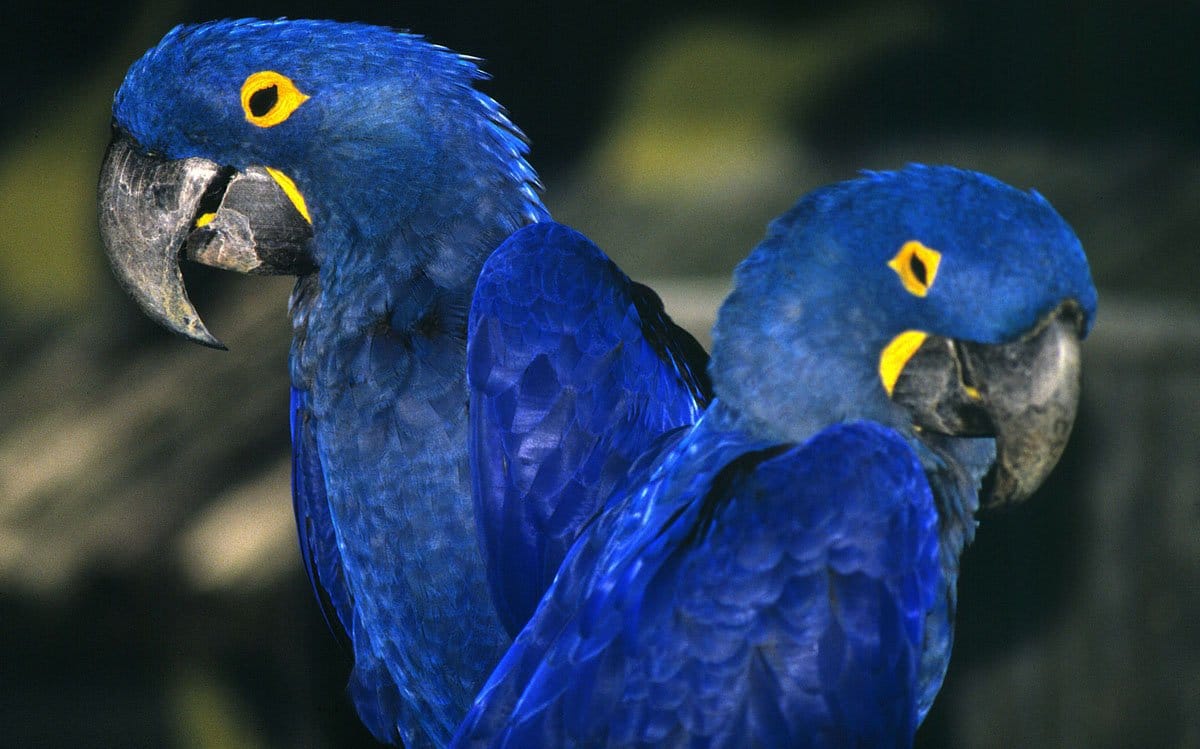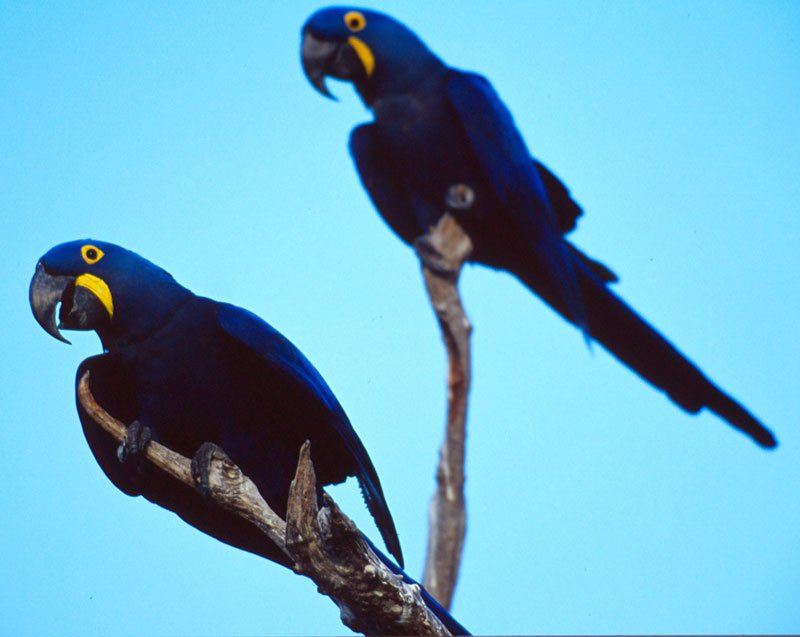Who doesn’t love a macaw? Big, bold, beautiful parrots full of character and charm, macaws make us long for some of the world’s wildest places and assure us that, as long as they fly free, those magical wild places are still intact.
One of the most majestic macaws is the Hyacinth Macaw (Anodorhynchus hyacinthinus), a brilliant blue South American bird that weighs in as the largest flying parrot in the world. The Hyacinth Macaw is more than just another pretty face; these birds are social with strong family values. They like to fly in pairs or groups and in the evening they come together in big groups to roost in a favorite ‘dormitory’ tree. The Hyacinth Macaw doesn’t start a family until it is seven years old. Mating pairs are faithful for life and share the tasks of raising the young.

Hyacinth Macaw © Roger Leguen / WWF-Canon
Hyacinth Macaws feed mainly on the kernels of the fruits of two species of palm tree: the Acuri or Urucuri Palm (Attalea phalerata) and the Bocaiuva or Macaw Palm (Acrocomia aculeata). In the case of the acuri, the birds usually eat those kernels that have already fallen to the ground or that have been ruminated by cattle or wild animals, but they eat bocaiuva nuts straight off the bunches hanging from the trees.
These macaws nest in existing holes in trees. In the Pantanal, 90% of the nests are made in Manduvi trees (Sterculia apetala) because of their soft heartwood, but some birds use other trees like the Ximbuva (Enterolobium contortisiliquum) and the White Angico (Albizia nipioides). The macaws enlarge small natural cavities in the tree trunks to make their nests and they line them with the splinters taken from the same tree. Such cavities are hard to find and are sometimes disputed by more than one species.

Hyacinth Macaws © Michel Gunther / WWF-Canon
Hyacinth Macaws, like parrots the world over, face threats from every side. Illegal capture for the wild animal trade is an obvious peril for such a charismatic species, but this big blue bird is also hunted both for its meat and feathers. Last but certainly not least, the macaw suffers along with the other species in its ecosystem from rampant habitat destruction and deforestation.
The three major strongholds of the Hyacinth Macaw are Pantanal region encompassing parts of Brazil, Bolivia and Paraguay, the Cerrado in interior, and Brazil’s eastern Amazon Basin region. Of these three regions, the Cerrado has the least exposure on the international stage, which is a shame since the Cerrado is almost the size of Western Europe and in total holds about 5% of all life on Earth. To be more specific, this vast tropical savanna is home to some 800 bird species. As much as 21% of Brazil is covered by the little-known but precious savanna, yet the Cerrado is disappearing faster than the Amazon rainforest (and you know that’s fast!)
The presence of Hyacinth Macaws is an important indicator of a healthy environment. Save the Cerrado and you’ll ensure that these magnificent macaws and about 800 other bird species will have a home. Check out the World Wildlife Fund’s creative campaign to save the Cerrado. You might also want to see how the World Parrot Trust works to protect parrots in the wild.

I love toucans too, but who knew they ate baby macaws? Say it ain’t so, Toucan Sam!
Toco Toucan © James Frankham / WWF-Canon
All photos used with the kind permission of WWF-UK.











Nice to see a post that talks about efforts to protect the cerrado (pretty nice images too). Most of that wonderful ecosystem is getting converted into bland soybean monocultures.
it was unforgivable what Tony Silva and his Mother did to exploit the Hyacinth Macaw, and Golden Conure, and god knows what else… he is now sharing a cell with BUBBA… and his Mother too……..nice article
awsome birds !!!!